Virtual Reality and the Oculus Rift, Should You Join the Fun

What is VR (Virtual Reality)
Virtual reality (or VR) is a computer technology that replicates an environment, real or imagined, and simulates a user's physical presence and environment to allow for user interaction with this environment. Virtual realities artificially create sensory experiences, which can include sight, touch, hearing, and smell. Most 2016-era virtual realities are displayed either on a computer monitor or with a virtual reality headset (also called head-mounted display), and some simulations include additional sensory information and focus on real sound through speakers or headphones targeted towards VR users. The immersive environment can be similar to the real world in order to create a lifelike experience - for example, in simulations for pilot or combat training - or it can differ significantly from reality, such as in VR games. - Wikipedia
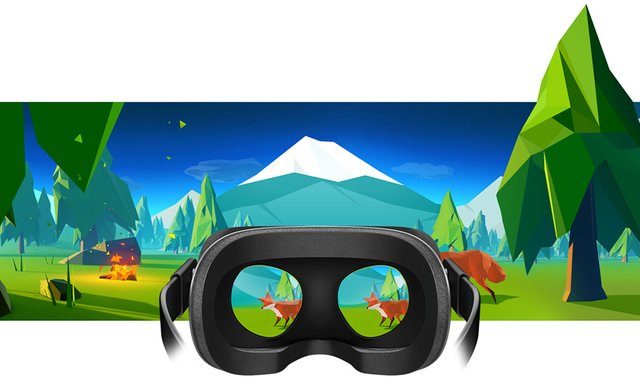
Why Oculus Rift and What is Needed for VR
Oculus Rift is the name of the currently most popular device for Virtual Reality on your computer at the moment, though it already has some strong competition. The story of Oculus goes back a couple of years to a garage, a young person that is fond of VR and HMD devices, an early prototype, then a successful Kickstarter crowdfunding campaign, later on followed by a billion dollar acquisition from Facebook. So it is no wonder that in the recent years everybody is referring to Oculus Rift when talking about modern day technology for Virtual Reality, even though HTC an Valve did come up with a very similar product called the HTC VIVE at some point and even Sony is working on a PlayStation VR headset for their gaming console.
The Oculus Rift was the first of the recent wave of VR oriented HMD devices and it did take its rightful place as the most popular one even before Facebook even got in the picture. It managed to start in the right way, getting focused on providing a good yet affordable solution to the problem of getting VR in the hands of the users around the world. Even though the first two development kits of the device, that were released prior to the consumer version, that is now available were quite good for the time they were made available they were still just trying to resolve some of the problems and issues in providing good VR experience.
There are some key requirements for a good VR experience that the hardware and the software of a product designed for Virtual Reality needs to follow in order to deliver realistic experience and good immersion. High resolution images with framerate (taxing for the computer's video card), low latency and pixel persistence that should be delivered by the displays used as well as the drivers and the software of the computer. These are required in order for the person wearing the headset to really feel the virtual world he is inside as closer to the real world that he is used to. The latest consumer version of Oculus Rift does manage to provide all of these, though there are some areas where you might want a bit more, so that it can really be a really good choice for getting into the world of VR with it right now.
Unfortunately the price of the final consumer version and the requirements that it has for the computer it needs are making it a bit hard for everyone to just get into VR, because of the cost associated with it. Hopefully in a few years of time things will not only get better in terms of hardware, but also in terms of cost and VR will become accessible to much more people around the world. I'm talking about serious high-quality Virtual Reality experience that the HMDs like Oculus Rift and HTC VIVE can deliver and not about the cheap and fun Google Cardboard type of VR you can get using your smartphone as it is really not comparable.
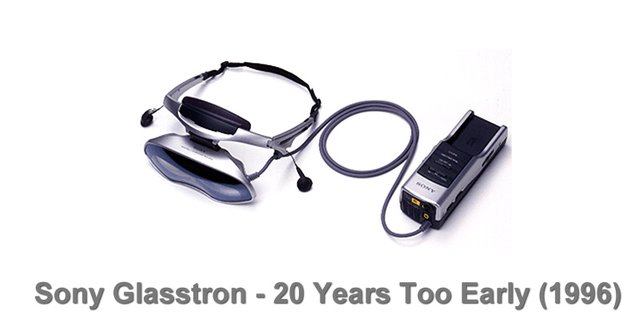
Getting Into VR, Science Fiction to Reality
Since I was a kid I was fascinated by the portray of Virtual Reality in science-fiction movies, the Hollywood way of representing VR in a movie of course had nothing to do with what a VR experience offers nowadays. The early days and these movies surely had an influence on me getting interested in VR and trying different products over the years, though nothing was really that impressive until I got to try the first development kit of Oculus.
Prior to that similar consumer products were not exactly VR oriented, the concept was more of just strapping a pair of displays to a glasses like frame and just showing what your computer display shows on them. It was like watching your computer screen from up close, or even not that exactly and seeing a lot of pixels, instead of getting the feeling that you may actually be somewhere else. Of course one of the things lacking was the technology to make things better or it being way too expensive, just lately with the smartphone boom things were starting to look good for VR again. It meant more affordable, compact and powerful hardware that was mass produced and available to play with and adapt to different needs. That is how the first Oculus Rift prototype came to be, just combining the right way different off the shelf components and getting a really good for the time result.
Remember that the first Oculus Rift was done in a garage by a single young person, do you know how HTC VIVE came to be so close to what Oculus Rift is in much shorter time - major funding from HTC and Valve and a big team of the right people working on it. For Oculus that took time, finding the right people to join the team and much later on came the big money with Facebook and thankfully Facebook just provided the financial resources after acquiring the company and did not start messing up tings.
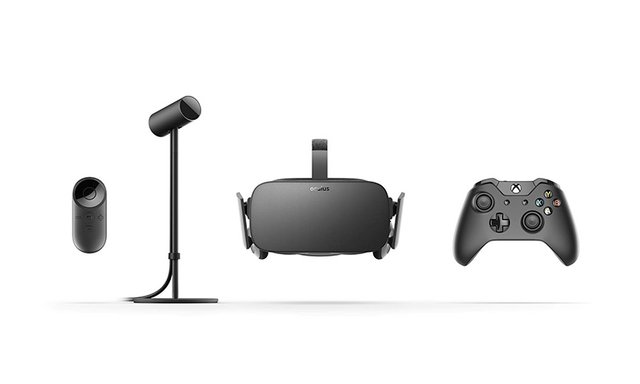
What is the Oculus Rift Exactly
Oculus Rift is essentially a peripheral device for your computer, it need a powerful one that can handle intensive graphical and computing tasks, that "replaces" your monitor for when you are in for a trip to a Virtual Reality world of your choice. You get a headset type of device with two displays, one for each eye, and focusing lenses in front of them, so that when you put the device on your head your eyes will only see what the displays inside are showing. It is important that a VR headset blocks all external light and you don't see anything from the real world around you, so that the VR experience you get will seem more realistic.
The two displays you have inside the headset do not show you the exact same image, they show essentially the same thing, but with a slight offset of the viewing point and thus providing the so called stereoscopic 3D effect. This adds to the immersion you get, because instead of having to see the same flat images with both your eyes you actually get to feel some sense of depth just like you would in the real world. So the only thing left is to also get a bit better resolution, because even though it is already pretty high for the displays used by Oculus, you can still see some pixels. The cause of that are the lenses that are zooming the image shown on the displays a bit, so to have the virtual world seem indistinguishable from real world one we would need a few more years at least, though even now things are already looking pretty good.
Furthermore the headset comes with a pair of headphones, though the stock ones coming with the Rift are not the best choice. The good thing is that they are detachable and you can use larger headphones that will also block the sounds from the real world around you while feeding you the noises of the virtual world you are getting immersed into. There are also trackers that know the position of your head in the real world and can translate that position and more importantly movement into the real world so that things will feel more natural to you.
Then you need some sort of a controller to navigate and more around inside the virtual world, we are not yet to the part where your actual full body movements will be translated into the virtual world as well, though I'm not entirely sure if most people will actually want to have that (there are some product designs that are trying to somewhat achieve that already). What you probably need is at least your hand movements to be tracked and represented in the real world, unfortunately Oculus is lacking a bit in that area as they have not yet released their Oculus Touch hand controllers, though it should happen in the next few months (HTC VIVE already ships with hand controllers).
What you get with the Oculus Rift for the moment is a game controller as well as a small remote controller to navigate in menus and such. The idea is that when you are wearing the headset you don't get to see your computer keyboard and mouse, so properly using these can be a bit of a challenge. So VR headset developers like Oculus are looking to alternative ways of providing you control such as using a gamepad controller that is much easier to be used even without having to see it or by dedicated controllers for each of your hands.
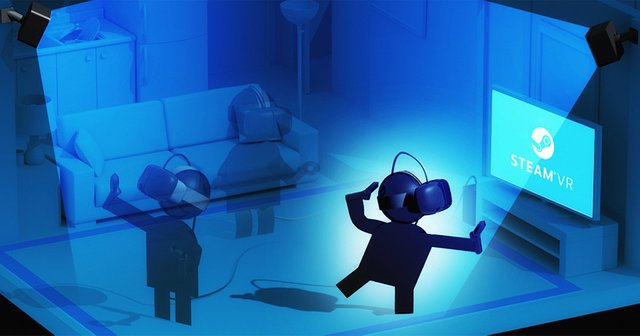
What Kind of VR Experience to Expect
It is a wise idea to get to know what you should expect from VR before actually getting into and buying an Oculus Rift headset for example. Since the new wave of Virtual Reality headsets like the Oculus Rift and HTC VIVE are having different approach than the previous generation of products you essentially need new content for them. That content needs to be created especially for VR in order to really take advantage of the immersion that such VR headsets can provide. As a result there is not yet that much content available that is especially made for Virtual Reality, though many developers are working on different content as I'm writing this. Essentially if you get an Oculus Rift now you will still be considered an early adopter of the technology and while this may be cool for some, others may not like the disadvantages that come associated with that. Still people here on steemit can also be considered as early adopters, so VR might just be the thing to go for as well...
Game developers can integrate support for VR headsets like the Oculus Rift to their existing titles and some have done it already, though it is most for simulation type of games where this tends to work very well. I'm talking about racing games mostly, though a first person spaceship simulation or plane flying would also work pretty damn well, though some other genres such as a third person arcade game could also work well. What does not work that well for games to be ported in VR is a fast paced first person shooters, so don't expect to see a lot of these becoming available for Virtual Reality headsets at this point, though in the future this may very well change.
What works really well though is a VR experience that was especially designed with the Oculus Rift or another similar headset in mind. These can either be interactive where you can walk around and explore things or be non-interactive where you just sit tight and enjoy the show. There are already quite a few of these available, even though the content that is specially designed for the consumer version of the Oculus Rift is still not that much (told you, an early adopter). However a lot of new VR experiences and VR games should be coming from now on and the more conservative game developers should also start to consider adding VR support at first and then as the VR headset user base increases to also start making games just for VR devices as well.
For the moment things are mostly being produced by indie developers and smaller companies, though some big names are already joining in the fun. With Valve closely involved with the HTC VIVE it should be more than a clear sign for game developers and gamers as well that there will be big things coming for VR. The potential and the magic of getting the feeling the feeling of being somewhere else and doing something differently while you are in the comfort of your home is big and it is just a matter of time for it to start being explored by more and more people and companies doing content.
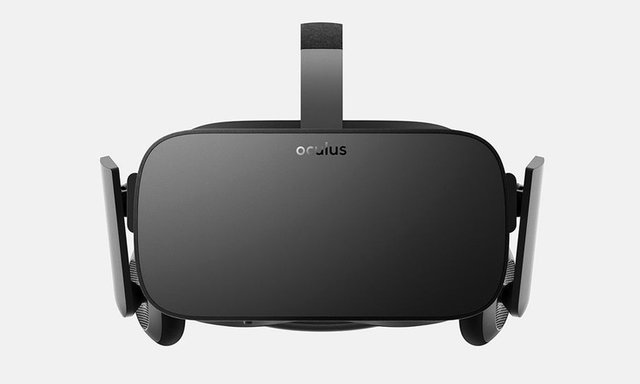
Should You Get an Oculus Rift Now
So by now you should have a bit better understanding of the current level of VR-capable consumer hardware available, even though the focus of this post was mostly on Oculus Rift. As I have explained already going for a VR headset like the Rift at the moment or the alternative HTC VIVE is still more like an early adopter thing. You get to be among the first people to experience it, though there is still not a ot of content available and there are some steep hardware requirements and in the end it turns out to be an expensive investment to get into VR.
System Requirements for the Oculus Rift:
GPU: NVIDIA GTX 970 / AMD 290 equivalent or greater
CPU: Intel i5-4590 equivalent or greater
RAM: 8GB+ RAM
VGA Output: Compatible HDMI 1.3 video output
Connectivity: 3x USB 3.0 ports plus 1x USB 2.0 port
OS: Windows 7 SP1 64 bit or newer
If you don't mind the price tag of $599 USD for the Oculus Rift kit (without touch controllers) and your current computer is powerful enough and meets the requirements for a good experience, then by all means do get it if you are interested in VR. If it is a bit too expensive for you or you don't want to play the early adopter game one more time, then you might want to wait a bit more for the next generation of hardware to become available. It could be even better and by then the content available for it should also be significantly more and hopefully also better.
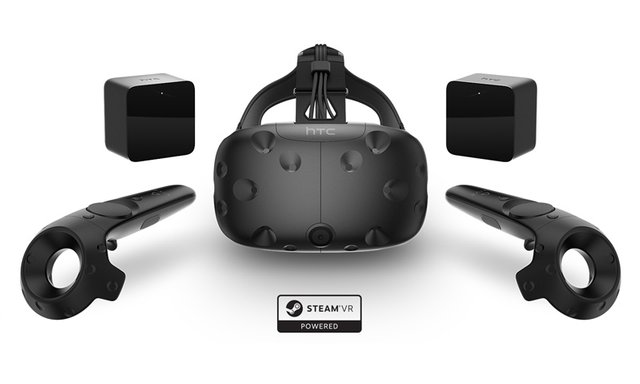
Alternatively you might be interested in the HTC VIVE. This is the major competitor of the Oculus Rift that is being developed jointly by HTC (a mobile phone company) and Valve (game developer and maker of the Steam game distribution platform). While the VIVE approach is very similar in many ways it does have some differences as compared to the Oculus Rift. It does come with hand controllers included in the kit, though that makes it more expensive and also has some extra features such as a built-in camera. The core experience however including the hardware inside the headset such as the displays is pretty much the same level as on the Rift. Because of the presence of hand controllers in the kit by default here a lot of the content available for the HTC VIVE already is making use of these, thus essentially making the VIVE experience mode dynamic and interactive than on the Oculus (at least until they release their hand controllers as well later this year).
It is important to note that at this point of time VR headsets are pretty much designed as an entertainment device and the content available for them is being mostly targeted for that. They are not suitable for work environments to be used as a content creation tools, though they can still be integrated in some work environments, but as tools for visualizing something and not for actually creating it. They can however be used as an interesting form of creating virtual art like for example drawing into virtual reality with the Tilt Brush tool from Google for example (available only for HTC VIVE at the moment) and in the future we may actually start seeing more such interesting and creative uses. For now however it is mostly gaming and entertainment from VR headsets, all fun and games and no work.
I hope that this was a good introduction about VR and VR headsets for people that might be interested in the topic and if there is interest I can continue and develop this into a series of articles about VR like I'm currently doing for 3D printers and 3D printing...
If you have a question or want to add something, then please leave a comment below...
Did you like what you have just read? Check my other posts on steemit @cryptos
VR/oculus is insteresting but lets not forget that there are practically no game.
There are some games already, not many though, and many of the developers try to focus on VR experiences instead. I've explained it in the post, you get to be an early adopter if you get an Oculus Rift now, nobody said it would be easy... just like steemit :)
I have never tried it, but it´s sound funny and will be volved more and more. Let´s see what ideas the developers will implement in the future...